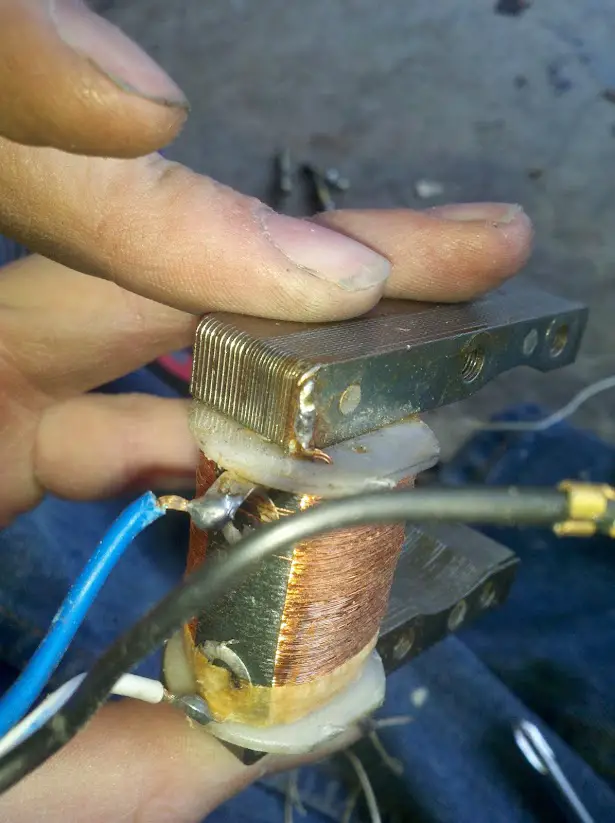Now you opened a can of worms!
It failed due to being cold soldered at the factory. This is most commonly caused by melting the solder onto the connection. Sorta like painting it on with a hot blob of molten metal rather than properly flowing it into the connection.
A cold soldered connection can easily appear to be good and hold the wire(s) firmly. What is happening on the inside of the connection is a whole 'nother story though.
A properly soldered electrical connection can only happen when all parts involved are just hot enough to melt the solder and a cleaning flux has been used. The part(s) need to be clean, free of corrosion and oxidation and at the correct temperature. This allows an electro-mechanical bond to occur. If one or more of the parts are corroded or not hot enough you end up with only a mechanical bond. This bond may still pass electricity through it, but do it poorly with high resistance.
Corrosion is the cause of many soldered failures. Most soft electrical solder has within the "wire" a rosin or water based cleaning agent inside it, like the filling in a Twinkie. This needs appropriate heat to work and clean the parts properly.
A part that is too cold will not get cleaned properly by the cleaning agent.
Inside a cold soldered joint, on the surface (at the molecular level) of the part(s) you will typically find corrosion between the part(s) and the solder. This is a double whammy as there is a poor/ no electrical bond between the solder as well as corrosion, both of which act as resistance to electrical flow. Electricity by nature can accelerate the action of corrosion by electrolysis. It will nurture it and make it grow. The resistance in the connection will also create heat as the electricity tries to pass through. Heat also accelerates the growth of corrosion. This turns into a self feeding, recycling problem.
Electrical flow and more heat creates more corrosion which in turn creates more heat. The cycle continues until the resistance gets so high that the connection can no longer pass electricity through it.
One last note, Did you notice that above I stated that the part(s) need to be just hot enough to melt the solder. Get the parts too hot and the solder will still melt, but corrosion/ oxidation will occur due to the excessive heat involved and the connection will have nearly identical problems as a cold soldered connection. No cleaning agent can keep the part(s) clean of oxidation if excessive heat is applied.


